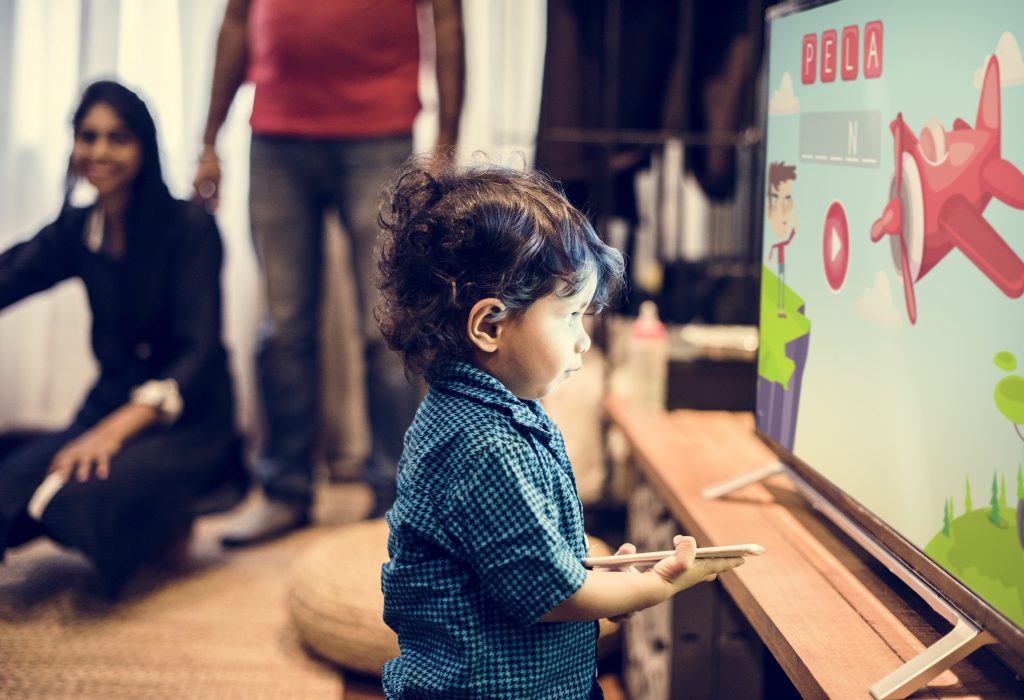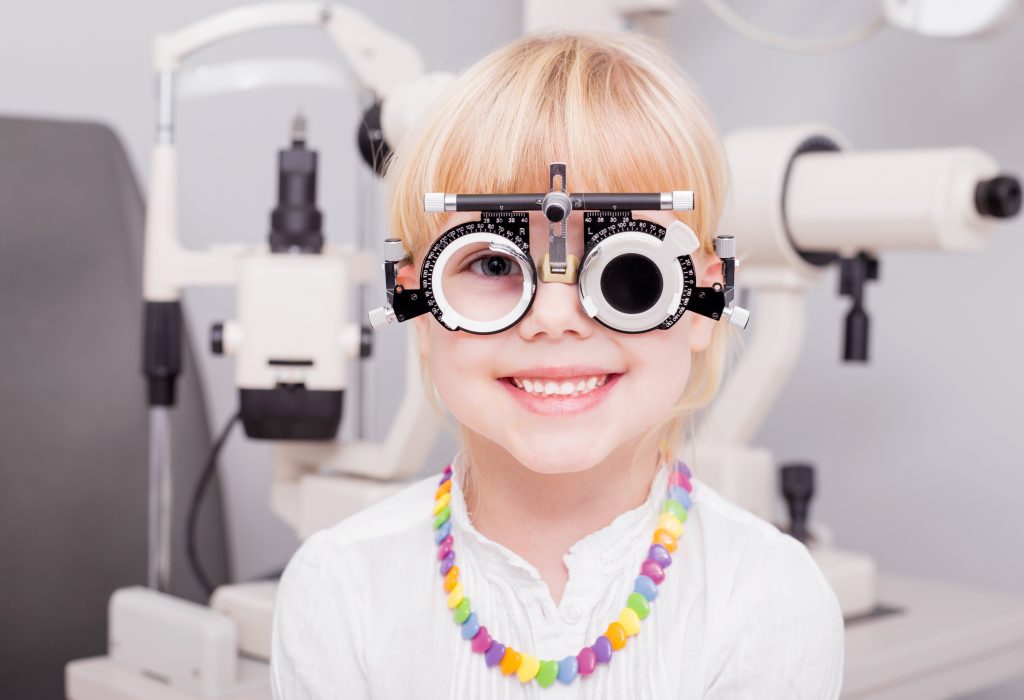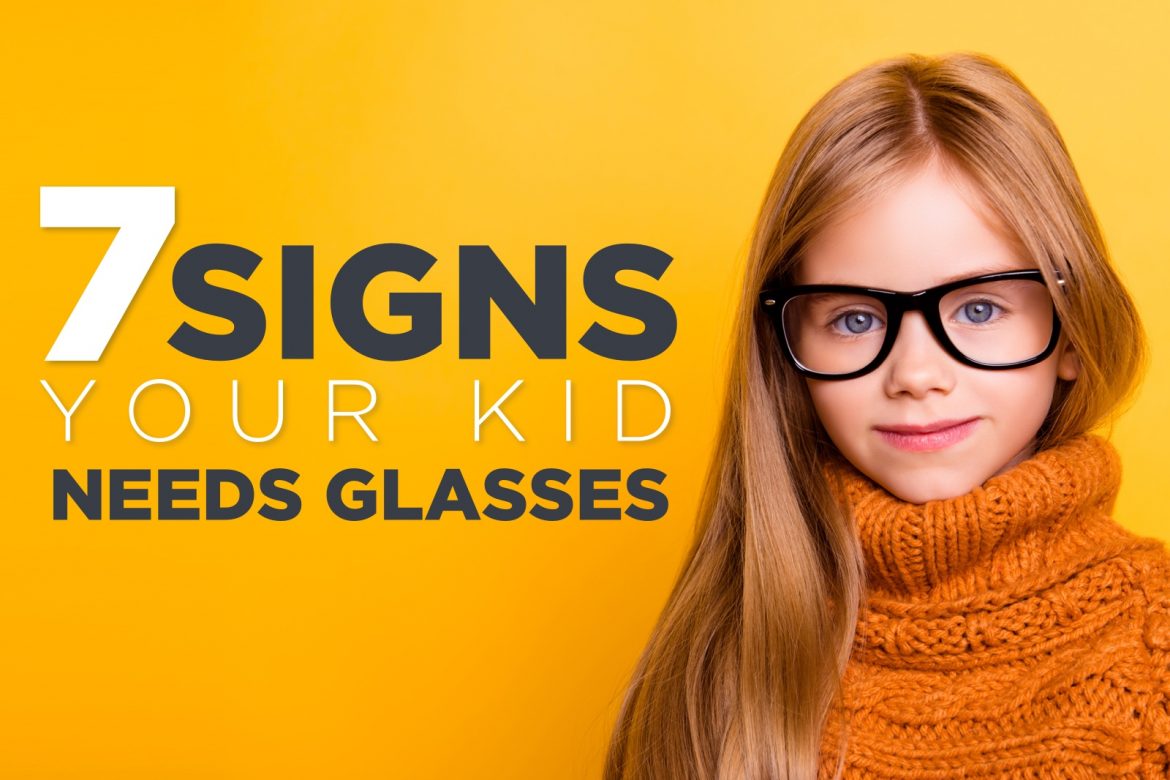![]()
You get a call from your child’s teacher. He’s been acting out in class again; this isn’t normal behavior, but it’s starting to become a pattern.
At home, you notice your child sits extremely close to the television, rubs her eyes with increased frequency and is complaining of headaches. These could all be signs your child might need glasses.
If you’re like me, you probably felt guilty for missing the signs that your child might need glasses. Looking at this situation after the fact, I realized there are 7 key signs that your child might need glasses, including:
Squinting
Squinting helps improve vision but only temporarily. When your child squints, she can actually see better. This is because squinting lets light into the eye through a smaller, more concentrated, opening, similar to letting light in through a pinhole. All other surrounding light is blocked out, letting the light that is getting in, bounce off the retina, refocus the lens of the eye, and enable your child to see.
If your child is squinting, she may have a refractive error, which means the shape of the eye doesn’t allow light to focus on the retina directly. This impacts how well the eye focuses on objects and images.
Headaches
If you notice your child is getting headaches and they’re increasing in frequency, this may be another sign your child needs glasses. Be especially aware if your child is complaining of headaches located in the forehead or around the eyes. When your child is trying extra hard to focus, this can cause the focusing muscles to strain and lead to pain around the eyes, the brow area, and can cause strain in the eyes, themselves.
Tilting the head
Have you noticed your child is tilting his head with increased frequency? Especially when watching TV or reading? This could be a sign your child has a lazy eye or that the eyes are misaligned and there is an imbalance between the eye muscles. When your child tilts his head, he’s trying to make things clearer by adjusting the angle of vision.
Covering one eye
When your child covers one eye in order to see, this is similar to if your child is tilting his head. The result may be a lazy eye, which is quite common in children. In fact, it’s the most common eye disorder in children. Lazy eye, also known as amblyopia, occurs when the brain is not communicating properly with one of your child’s eyes.
As mentioned previous, lazy eye can be caused when the eyes are not aligned, but it can also occur when one eye is farsighted and the other is nearsighted or vice versa.
Finally, lazy eye can occur when one eye has less ability to focus, which is also called an astigmatism. If your child is tilting his head, covering one eye, or you can visibly see the eyes are not working together, this is a sure sign your child may (a) have a lazy eye, and (b) need glasses.
Sitting too close
Remember when you were a kid and you would sit nose-to-nose with the TV and your parents would yell at you, “If you sit too close to the TV like that, you’ll go blind!” Well, while that was likely more of a ploy to get you to back up so the rest of the family could enjoy what was on the screen, you were never really in jeopardy of going blind. Sitting too close to the TV, however, could be a sign of needing glasses.

Truth be told, children have an easier time focusing on objects that are close up without straining their eyes, so sitting close to the TV yields little to no damage at all.
What sitting too close to the TV can be a sign of is nearsightedness. This rings true if you notice your child also has a tendency to hold hand-held devices like smartphones or game consoles right up in their face. Since nearsightedness means you can focus on objects close up but not on those far away, by sitting too close to the TV or bringing that hand-held device up to his face, your child is attempting to make the images they see clearer.
Rubbing the eyes
Children tend to rub their eyes frequently – it’s what they do. However, this could be another indicator your child may need glasses. Pay close attention to whether your child is doing so with more frequency as it could be because your child is experiencing eye strain while trying to see. Glasses will alleviate that fatigue and eye strain and cut down on that excessive eye rubbing, if not eliminate it altogether.
Trouble reading
Observe your child while she’s trying to read. Does she use her finger to follow along? When reading aloud, does she seem to lose her place easily or does she skip words or even entire lines? This is yet more indication your child might need glasses.
Be aware if you’re also getting reports that your child is being disruptive in the classroom at school, especially if her seat is in the back of the room. She might not be able to see the board and oftentimes, avoidance and disruptive behavior are ways your child might be masking the fact she can’t see the board or what she’s reading.
What now?
 If your child is exhibiting one or more of the signs mentioned above, make an appointment for a comprehensive eye exam with your eye care provider right away. A comprehensive eye exam will check for the following:
If your child is exhibiting one or more of the signs mentioned above, make an appointment for a comprehensive eye exam with your eye care provider right away. A comprehensive eye exam will check for the following:
- Vision clarity
- Vision sharpness
- Eye alignment
- Crossed eyes
- Depth perception
A comprehensive eye exam will also check the overall health of the eye, as well as check for more serious eye conditions.
Get your child’s vision checked right away if you notice he or she may have difficulty seeing, as it is not only vital to their ability to see but vital to their eye health and their success in school.

